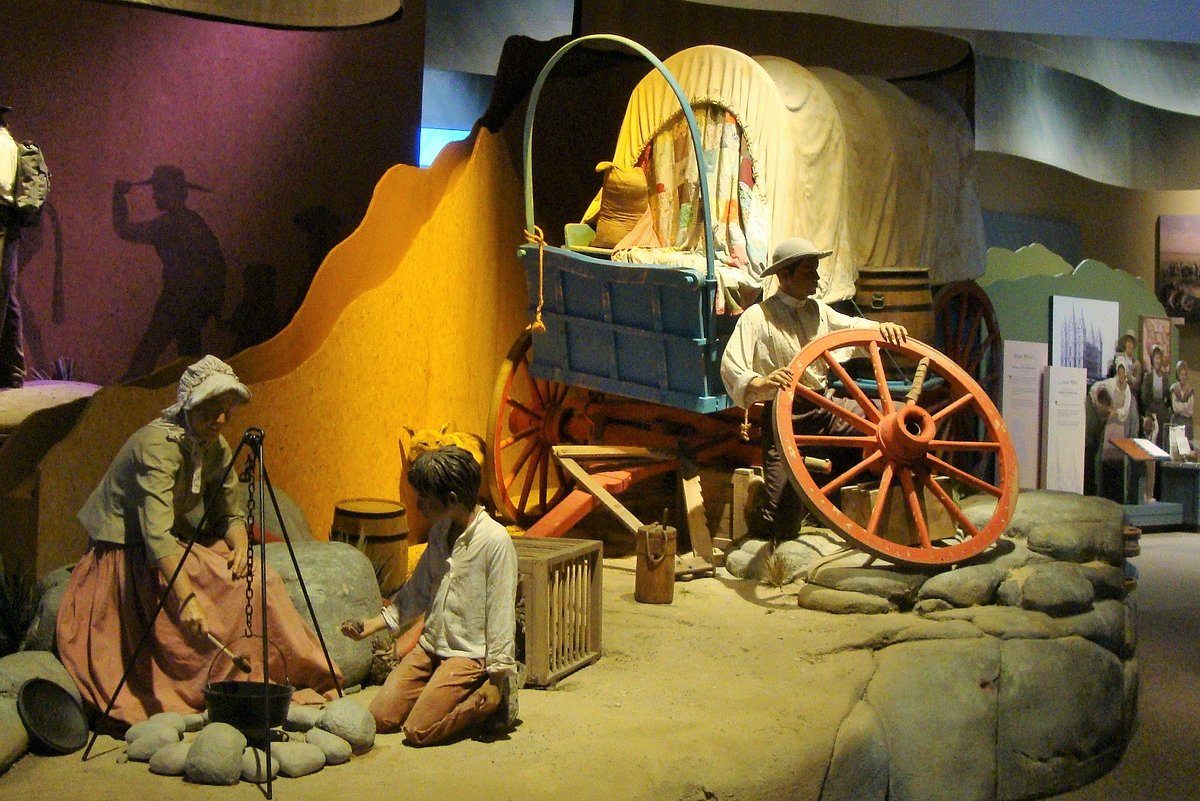Experience Americas Most Treasured Roads

Touring the Byway
64 Miles | 3 Days / 2 Nights | Gateway City: Casper, Wyoming
We recommend starting your journey in Casper, a picturesque town in the heart of Wyoming. Travel back in time to the days of intrepid pioneers at the National Historic Trails Interpretive Center, tour a reconstructed 1865 military post at Fort Caspar Museum, explore Wyoming’s diverse ecology at the Werner Wildlife Museum, and see some of the state’s best Western Art at the Nicolaysen Art Museum. Spend your first evening relaxing at an area ranch.
On Day Two, make sure you gas up before leaving Casper, because there are no stores or filling stations along the backway. It begins in Alcova, a small town with big scenery, at the intersection of WY-220 and County Road 407/Kortes Road. Head south on County Road 407 with a stop at the Alcova Dam and Reservoir, before hiking the Cottonwood Creek Dinosaur Trail, where you can try to spot fossils. After passing the ponderosa pine-dotted Pedro Mountains to the west, you can follow the Miracle Mile, a seven mile stretch of free-flowing North Platte River. Then a steep and winding section of the backway greets you as you drive through the Seminoe Mountains, to the Seminoe Dam, a concrete arch that rises 295 feet above the canyon floor. Next up, Seminoe State Park with abundant wildlife and the Haystack Mountains with sweeping views of open sagebrush country. The backway ends in Sinclair, a high desert town, with a Civil War cannon at the former Parco Hotel.
On Day Three, head east on Interstate-80 to Laramie, with a stop at Fort Fred Steele State Historic Site, an 1868 railroad fortress. As you cross the North Platte River one last time, see 100 years of history come to life at Elk Mountain Museum.
From there, we wish you a safe passage if you’re continuing your journey on another Wyoming Scenic Byway, or a safe and pleasant journey home.
View the Detailed Itinerary below to see the full route, which is complete with dining, shopping, and lodging recommendations!
Highlighted Attractions

National Historic Trails Interpretive Site
Celebrating the Oregon, Mormon, California, Pony Express, Bridger, and Bozeman trails, the National Historic Trails Interpretive Center commemorates the Native American history of the region, as well as early explorers and pioneers who traveled the corridors west. Hands-on, interactive exhibits, multi-media programs, and virtual education opportunities illustrate the historic westward expansion.

Tate Geologic Museum
The Tate houses a collection of over 6,000 fossil and mineral specimens gifted by Marion and Inez Tate. Highlights include Dee the Mammoth, an 11,600-year-old Columbian Mammoth which lived in the American West during the Pleistocene, or Ice Age, the skull of Nicole the Torosaurus, the Mesozoic Marine, exhibits featuring the underwater world that existed in Wyoming during much of the Triassic, Jurassic and Cretaceous periods, and the Hall of Minerals.

Wyoming Territorial Prison
Starting in 1872, the Wyoming State Territorial Prison served as a penitentiary for both the United States and Wyoming for 30 years, holding the likes of Butch Cassidy and the Hole in the Wall Gang and other violent and desperate outlaws. Now a museum, you can discover the stories within the iron cells, plus the prisoners’ dining area, guard’s quarters, infirmary, women’s quarters, laundry room, warden’s office, and various exhibit galleries. New exhibits include: Found During Restoration: Artifacts Uncovered, N. K. Boswell: Warden and Lawman, Innocent or Guilty? Women Inmates of the Wyoming Territorial Prison, and a new exhibit on Butch Cassidy. The prison industries building broom factory was used to raise revenue and in some cases, as a rehabilitative strategy.

Cottonwood Creek Dinosaur Trail
This 7/10 of a mile trail — doable, but steep in some places — provides a fascinating glimpse of how Wyoming may have looked during the late Triassic and early Jurassic periods. The site features interpretive signage explaining the geological evolution of the region, as well vertebrate, invertebrate, and plant fossils recently found in their natural settings and left “in situ” to view. The trail also leads through Jurassic Sundance and Morrison period formations. Still a very active fossil discovery site, the skeleton of a medium-sized dinosaur called Camarasauraus was discovered by a fifth grader from Casper in 1991.

Fort Fred Steele State Historic Site
Established in 1868 to protect the newly built Union Pacific Railroad, this frontier army post served as a hub for both the military and Wyoming’s lumber and livestock industries. Though many of the foundations are still visible, very few structures are intact.
To experience all that a Journey Through The Windswept West has to offer, download the complete itinerary!
The detailed itinerary includes:
- A complete trip experience organized in geographic order, to print down and go.
- A full description of the Byway tour.
- Each trip experience begins in a gateway city with commercial flight availability (and often ending in another) to enhance the Byway experience.
- Attractions and activities along the full length of the Byway selected to truly tell the story of the places you visit.
- Detailed description of each attraction and activity, including the address, telephone number, hours of operation, admission fees and suggested time to allow for a visit.
- Accommodations (related to the theme of the Byway or unique to the destination wherever possible) positioned in the correct locations and including breakfast wherever possible.
- Dining suggestions positioned in the correct locations for lunch and dinner.
- All attractions, accommodations and dining locations arranged into Days that allow time for relaxation, savoring meals and enjoying the experience.
- A road trip to create memories and intrigue your mind.
Contact Information
National Travel Center
433 North Charlotte Street
Lancaster, PA 17603